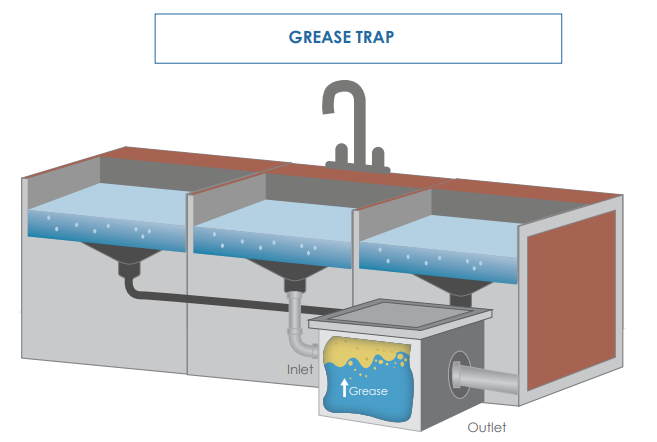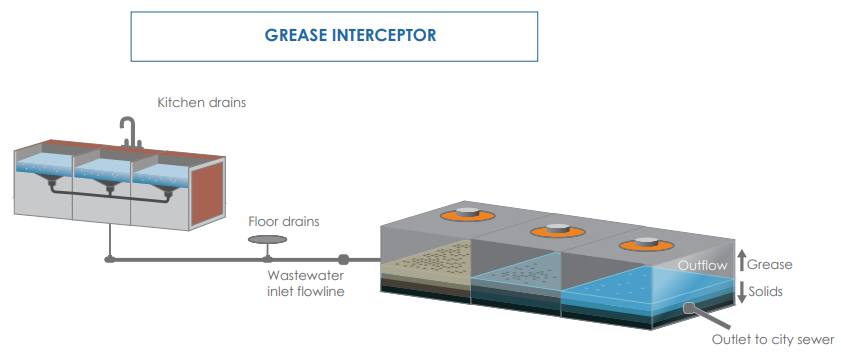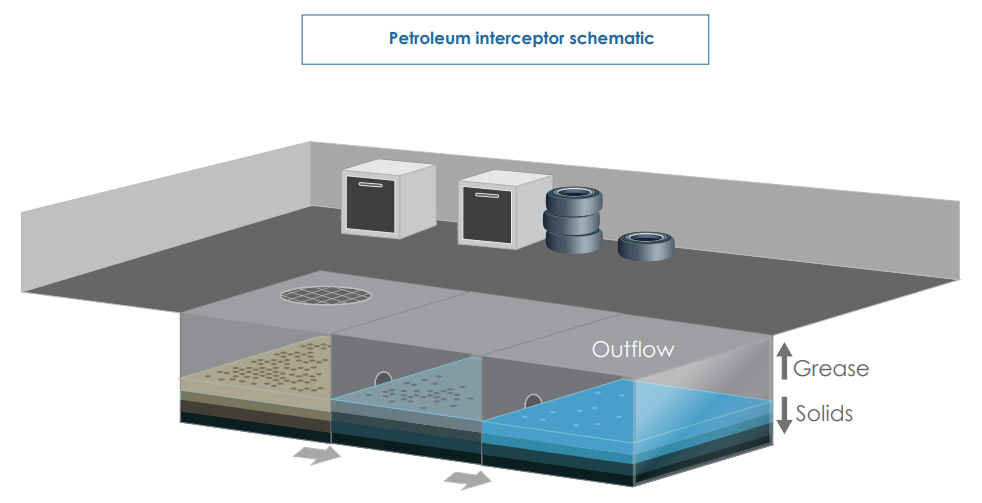Pool Draining
Draining and backwashing are essential parts of keeping your pool summer ready, but how you discharge that water is also one of the most important ways you can help protect the environment and respect your neighbors’ properties. Pool water should never be discharged to the street. It is not only a nuisance to neighbors, but it is a violation of local, state and federal regulations.
Storm drains are intended for flood prevention, not wastewater disposal. When pool water, which is already high in salt or chemicals, is discharged to the street, it flows untreated into the city’s flood control system, picking up oil and debris before coming to rest in retention basins or eventually making its way to the Salt River where it can damage or kill aquatic life. Water left in streets also damages the pavement over time, leading to costly, burdensome street repairs.
- What can I do with discharged pool water?
- Option 1: Irrigate Your Landscape
Draining pool water to your desert landscape or lawn is a great option for disposing of pool water. Allowing the water to percolate into the ground lets you reuse the water you already paid for and conserve the water you would otherwise need for irrigation.
What to watch out for:
- Pool water contains more salt and chlorine than tap water, so be sure to use caution when applying pool water on certain plants.
- For best results, wait three to seven days after treatments before draining to allow chlorine to dissipate. The pH should be in the 7-8 range.
- Move the hose frequently to avoid creating areas of stagnant water that can attract mosquitoes.
- Water must be contained on your own yard. Do not allow the water to flow into your neighbor’s property or the storm drain.
If you have too much water for your landscape, you can drain or backwash the pool into your home’s sanitary sewer cleanout.
- Locate your sanitary sewer cleanout and remove the cap.
- If you are completely draining the pool, shut off the power to the filtration system and turn off the automatic water fill valve if you have one.
- Run the drainage hose from a submersible pump in the pool to the cleanout pipe. Be sure to secure the hose so it won’t pop out.
- Turn on the pump and immediately check to make sure no water is backing up in the house (check the shower and tub first). If the water backs up, turn off the pump immediately. You may have a blockage or have the pump flow rate set too high. Rule of thumb is no more than 50 gallons per minute.
- Where can I find the sewer clean out?
A sewer cleanout is two four-inch caps about a foot apart with a square nut on top. It is part of the private plumbing associated with the property and may be located in either the front or backyard, usually near a bathroom. Homes older than 20 years may not have a sewer cleanout unless the homeowner had one installed.
Sewer cleanouts may be difficult to find. This is generally caused by landscape changes over time. Scottsdale does not have records showing where the sewer cleanout is located on private property. If uncertain, please contact a licensed plumbing contractor to locate or install a cleanout.
- Refilling your pool in the winter?
Unlike water, sewer use is not metered. Instead, sewer rates are updated annually in July based on your average water use in December, January and February. If you are refilling your pool during these months, your water use may not be a true reflection of the average amount of water discharged to the city’s sewer system. To request an adjustment to your sewer volumetric charges, you must submit a Sewer Charge Adjustment Request by Aug. 31.
- Did You Know?
Pool water drained to the city sewer system is treated and recycled for future beneficial use!
Scottsdale Water operates one of the most innovative advanced water treatment systems in the nation. Annually, we recycle over 2.5 billion gallons of water for turf irrigation and recharge over 1.3 billion gallons of highly treated recycled water to Scottsdale’s aquifer, which ultimately helps safeguard the long-term viability of our groundwater supplies.
Salt-tolerant plants
The following list of plants and trees commonly found in Scottsdale landscapes is meant to be used as a guide for identifying plants that can and cannot be safely irrigated with pool water.
Moderate to Very Salt Tolerant/
Oleander
Bougainvillea
Rosemary
Bermuda Grass
Desert Broom
Natal Plum
Ice Plant
Texas Sage
Olive
Mesquite
Saltbush
Afghan Pine
Moderately Salt Tolerant
Lantana
Pyracantha
Bottlebrush
Yucca
Most Acacia
Palo Verde
Salt Sensitive (Do Not Use Pool Water)
Fruit Trees
Star Jasmine
Hop Bush
Roses
Jojoba
Hibiscus
Reducing Salinity
Recycled water is an essential part of Scottsdale's total water supply. In 2014 alone, Scottsdale Water delivered almost 2.1 billion gallons of recycled water for turf irrigation and recharged over 1.3 billion gallons of highly treated recycled water into the aquifer.
High levels of salinity in our wastewater, caused in part by salt-based water softeners, can be harmful to people and the environment and is not removed in traditional wastewater treatment processes. To make future beneficial use of our wastewater supply, it must be treated through advanced - and expensive - water treatment processes.
To help reduce the amount of salt entering our wastewater, Scottsdale Water launched a two-year pilot program in July 2014 that provides three rebate options to incentivize removal of salt-based water softeners.
Visit our Rebates section to see if you are eligible for a rebate to remove or replace your salt-using water softener.
Commercial Fats, Oils and Grease
Restaurants play a major role in helping keep Scottsdale’s sewer system working properly. Reducing the amount of food waste that is put into the city’s sewer helps reduce odors, avoid clogs or blockages and prevent costly repairs. Grease traps and interceptors are the best options to help keep the sewer system operating properly.
Grease traps are small devices (typically less than 100 gallon capacity) located inside the kitchen, directly plumbed to the 3-compartment sink. They help trap food debris and grease that can mistakenly be washed into the sewer
Grease Trap Image Download (PDF)
Grease interceptors are much larger, 2- or 3-stage systems. Located underground outside of the building, they act as mini wastewater treatment systems to remove the fats, oils and grease from a restaurant’s liquid waste.
Grease Interceptor Image Download (PDF)
Both grease traps and interceptors must be documented that they are cleaned and maintained on a regular basis. The routine varies for each restaurant and depends on the size of the kitchen and volume of food prepared each day.
Scottsdale’s Water Quality Department is responsible for inspecting each restaurant and ensuring that all grease traps and interceptors are properly cleaned and maintained.
Car Washes and Service Facilities
Petroleum Interceptor Image Download (PDF)
Car washes and repair shops an important role in keeping Scottsdale’s sewer system working properly. Oil and grease released into the sewer system builds up and can eventually block the sewer pipes and equipment used to treat the wastewater
Sand/oil interceptors are similar to a restaurant’s grease interceptor in that they are multi-stage units designed to capture dirt, debris and automotive fluids that flow into the shop’s drainage system. Like a holding tank, the interceptor provides adequate time for the water and oil to separate so that the petroleum, oil and grease are left behind while the water is discharged into the city’s sewer system.
Automotive repair shops, auto body shops, radiator repair shops, car washes and fleet service facilities in the city are required to have their interceptor pumped and cleaned at least once a year. Depending on the amount of discharge in each facility, more pumping and cleaning may be necessary to maintain the device operates properly.
All maintenance records (including pump out documentation) must be kept on site for a minimum of three years and be available for review during routine inspections.
Pressure Washing and Surface Cleaning
Pressure Washing as Part of the Solution: When done properly, pressure washing can help improve the quality of our water. By cleaning surfaces and collecting and disposing of wastes you are removing pollutants that may have ended up in our water ways.
The Problem: Most pressure washing activities are conducted outside without proper controls, leading to the discharge of wastewater and debris to the storm drain, which ultimately leads to water bodies or collects in trap basins.
Best Management Practices
Plan Ahead
Prior to beginning pressure washing, determine what wash water containment and disposal methods you will use and identify the specific location where you will dispose of the wastewater generated from the cleaning activity. Obtain permission to access onsite disposal point.
Prepare Site
Block storm drains with an impervious barrier such as gravel bags or berms, or seal storm drains with plugs or rubber mats. Obtain permission to access onsite disposal point.
Surface Preclean
Use dry methods and absorbents on small oil spots to clean spills before washing. Sweep up trash, debris and dirt before wet washing. Properly dispose of precleaning waste. Precleaning can significantly reduce costs and simplify the wastewater disposal process.
Pressure Wash Responsibly
Minimize water usage during cleaning (use a low-volume nozzle). Avoid using cleaning products that contain hazardous substances.
Collect Wash Water
Use an approved wastewater containment method to collect all wash water. Place an oil absorbent pad on top of collected wash water to reduce or remove floating oil. Wastewater with high pollutant concentrations, including cleaning compounds, must be completely collected and may not be left to evaporate.
Dispose of Wash Water
Determine appropriate wash water disposal. See below for examples.
Wash Water Containment
Berms
Create a protective barrier around the storm drain inlet allowing the wastewater to pool around the drain prior to proper collection and disposal. Berms may be less effective or ineffective when the storm drain is located at the bottom of a slope or a large amount of wash water is generated.
Storm drain covers and mats
Magnetic vinyl mats, polyurethane mats or PVC drain covers placed on top of the storm drain grate allow wash water to accumulate until the pressure washing activity is complete and the wash water can be collected for proper disposal. Storm drain covers are often used with a vacuum device that diverts wash water into the sanitary sewer system.
Vacuum Devices
Wet/dry vacuums, sump pumps and vacuum pumps can be used to collect wastewater after pressure washing. Vacuum devices typically have an extension (vacuum boom) that allows the wash water to be collected efficiently. Many vacuum devices are also designed with a second hose that can run from the pump to the sanitary sewer or a truck/trailer-mounted holding tank.
Wash Water Disposal
Disposal through a Pretreatment Device
Discharge wash water to the sanitary sewer through a fats, oils and grease or petroleum, oil and grease interceptor. The easiest access point to this system should be the business mop sink or the cleanout located before the interceptor.
Disposal by liquid waste hauling company
Permitted third-party company hauls wash water to a treatment site before discharging to the sewer under specific permit. Waste management company must be permitted by the Arizona Department of Environmental Quality to manage wastewater.
Disposal as Hazardous Waste
Some wastewaters must be transported through a licensed hazardous waste hauler. Generator must have a state or federally issued EPA ID number. For hazardous waste questions, contact the Scottsdale Solid Waste Department at 480-312-5600.
Mobile Food Units
Properly disposing of fats, oils, and grease (FOG) and grey water protects Scottsdale's sewer system and the environment. FOG can build up and completely block sewer pipes, which can create difficult and expensive maintenance problems for both the city and private property owners. Blocked sewer pipes can also cause raw sewage to back up into homes or businesses, or overflow into streets and washes.
- Discharge utensil washing wastewater to a drain that leads to an adequately sized and regularly cleaned grease trap at your permitted commissary kitchen.
- If using a liquid waste hauler to dispose of this wastewater, make sure:
- The waste type is marked as “Food Service Grease Interceptor (or Trap)” on the manifest.
- You obtain and keep your copy of the liquid waste hauler manifest for your records for at least 3 years.
- The wastewater will be taken to a facility permitted to accept food service waste.
- Collect used cooking grease in a closed container.
- Contract with a waste grease recycling service or properly permitted recycling/disposal facility for the collection, recycling or disposal of used cooking grease.
- Dispose of any wastewater on the ground or down any storm drain. Storm drain water is not treated and flows directly into Indian Bend Wash.
- Dispose of any utensil washing wastewater down toilets. Toilets are not connected to grease traps.
- Dispose of any wastewater at a car wash or any other location not authorized to receive hauled liquid waste or not designated as the permitted commissary kitchen for your mobile food vending operation.
- Dispose of utensil washing wastewater down any drain unless it has been verified with the commissary kitchen’s business owner/manager that the drain goes to a grease trap.
- Dispose of any used cooking grease to any drain, even if it is connected to a grease trap. This waste must be recycled or disposed using facilities permitted to accept such waste.
Last Updated: Apr 1, 2025
Scottsdale Water Resources
9312 N. 94th St. Scottsdale, AZ 85258Hours
| Monday | 7 a.m. - 4:30 p.m. |
| Tuesday | 7 a.m. - 4:30 p.m. |
| Wednesday | 7 a.m. - 4:30 p.m. |
| Thursday | 7 a.m. - 4:30 p.m. |
| Friday | 7 a.m. - 4:30 p.m. |
| Saturday | Closed |
| Sunday | Closed |


